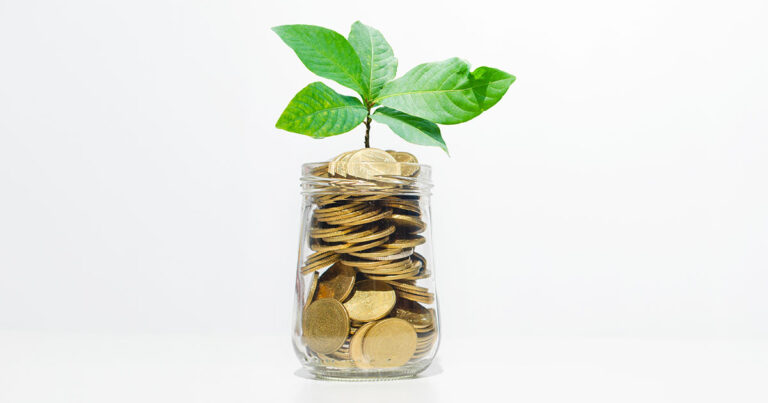10 new year traditions from around the world

This article covers:
As the new year approaches, people all over the world start to think about their plans for the coming year.
Some people make resolutions, some set goals, and others just hope for the best. But no matter what your approach, there’s one thing we can all agree on: everyone wants a good year.
We have listed 10 new year traditions from around the world.
Whether or not you believe in the powers of these traditions, there’s no harm in trying them out – who knows, they just might work!
Don’t worry, most of these traditions involve a lot of food and urhm… underwear too. New year, new you, right?
Now, let’s kick start the new year with some good old-fashioned fun.
Japan
On New Year’s Eve, Buddhist temples across Japan will ring their bells 108 times. This is said to represent the 108 human desires that cause suffering. And that’s not all.
Japanese will also head to their local shrines to ring in the new year with a bang. It’s known as Hatsumode.
But what exactly is Hatsumode? It’s simply the first shrine visit of the year, and it’s considered to be good luck.
Fortune telling is one of the most popular activities at shrines and temples during Hatsumode, and there are a variety of ways to do it. One popular method is to shake a container of numbered sticks and ask for an interpretation from a priest or shrine attendant. Another is to consult an omikuji, a piece of paper with your fortune written on it.
However, if you’re not so lucky and your fortune tells you that you’re going to have a tough year, don’t worry – there’s always osechi.
This meal usually includes dishes like boiled seaweed, mashed sweet potato, and grilled fish. It’s said to be good luck to eat osechi, so even if your fortune isn’t the best, you can still enjoy a delicious meal.
Philippines
Unlike most cultures who celebrate with a midnight countdown, Filipinos wait until the last minute to start their celebrations.
At exactly twelve o’clock, everyone starts making noise by banging pots and pans, setting off fireworks, and honking horns.
The point is to make as much noise as possible to scare away evil spirits and bring in good luck for the new year.
Speaking of spirits, if you really want to get into the spirit of things, you can dress in polka dots and open all the doors and windows in your house.
The polka dots are said to represent coins, which will bring good luck in the coming year.
As for opening the windows and doors, that’s supposed to let all the bad luck out and make room for good luck to come in.
Italy
If you happen to be walking the streets of Italy on New Year’s Eve, you might want to watch out for flying objects. That’s because many Italians take part in a tradition of throwing old or unused items out the window.
The belief is that by getting rid of these things, they will also be getting rid of bad luck and negative energy.
As you can imagine, this can create quite a mess. But for Italians, it’s all part of ushering in the new year to a fresh start.
So if you see a few old shoes or some curtains floating down from an upper-story window, don’t be alarmed. It’s just Italians getting rid of their bad luck and making room for good things to come in the new year.
Don’t be surprised to be awoken by the sound of pots and pans being smashed together.
The noise is said to scare away evil spirits, and the broken pots represent the destruction of bad luck. The idea of cleaning up later may not be the most relaxing way to start the year, but there’s something undeniably fun about smashing things up.
China
For starters, Chinese New Year is not actually on January 1st. It falls on the first day of the lunar calendar, which means it can occur anywhere from late January to early February.
At midnight, firecrackers are set off to scare away evil spirits. And unlike the Italians, smashing items are deemed as unlucky.
Another interesting tradition is the use of zodiac animals to represent the twelve-year cycle.
According to a legend, Buddha invited all the animals of the world to come to celebrate New Year with him.
But only twelve animals showed up. As a result, Buddha chose to honor them by assigning one animal to each year. The order of the animals is said to be determined by their arrival at the celebration.
What’s the point of knowing your zodiac animal? Well, each animal is said to have certain personality traits. So, if you know your zodiac animal, you can get a better sense of who you are and what to expect in the coming year. It will also determine your lucky colour, item, direction, and number.
There is so much more to Chinese traditions. If you want to go full out, you should follow these 10 steps.
Korea
Similar to China, the Koreans celebrate the new year according to the lunar calendar. The Korean new year is known as Seollal.
One of the most important traditions is the sebae, or the honoring of elders. The younger generation greets the older generation with a deep bow, and in return, elders give a gift of money.
This tradition symbolizes respect and filial piety, two values that are highly important in Korean culture.
Another popular Seollal tradition is making and eating tteokguk, a rice cake soup. This dish is said to bring good luck and signify a new beginning.
The round shape of the rice cakes represents the cyclical nature of time, and eating a bowl of tteokguk is supposed to add one year to your life.
Russia
As soon as the clock strikes midnight on December 31st, Russians across the country head for the sauna, or banya.
This traditional new year’s eve practice is said to cleanse the body and prepare it for the year ahead.
After a good sweat, Russians enjoy a feast of Olivier salad, which is typically made with potatoes, carrots, pickles, and mayonnaise.
And of course, no new year’s celebration would be complete without a glass of champagne. But in Russia, the champagne comes with a twist. Prior to drinking, each person writes their new year’s wish on a piece of paper, which is then burnt to ashes and dissolved in the champagne glass.
Spain
If there is one fruit you expect to be out of stock in Spain, that will be grapes.
One of Spain’s unique New Year traditions is the custom of eating 12 grapes at midnight. According to a legend, doing so will ensure good luck in the coming year. The grapes are usually eaten one at a time, with each chime of the clock corresponding to a grape.
This tradition is thought to have originated in Valencia, but it has since spread to other parts of Spain.
If you miss out on the grapes, you can try eating lentils and chorizo sausage instead. Lentils represent coins, so this dish is said to bring financial luck.
Another popular tradition is to wear red underwear on New Year’s Eve. This is said to bring luck in love and relationships. So if you’re looking for a new partner or hoping to spice up your love life, make sure you don your red underwear on December 31st.
Mexico
Spain and Mexico have very similar traditions when it comes to food.
Lentils and grapes are both eaten on New Year’s Eve in Mexico, although the lentils are usually cooked with pork for added flavor.
Don’t be surprised to see a Mexican walking around with their suitcase. It symbolically shows their intention to travel in the coming year.
Let’s just say that Mexicans’ hopes for the year are also reflected in the color of their underwear.
According to tradition, if you wear red underwear on New Year’s Eve, you’ll have good luck in love. If you want to be successful in your career, wear yellow. And if you want some peace, white is the way to go.
Ireland
A loaf of bread shall be your mighty weapon for the year.
No, this isn’t a scene from Game of Thrones. It’s an Irish New Year tradition.
At midnight on New Year’s Eve, the head of the household takes a loaf of fresh bread and knocks on each door in the house. Apparently, it helps to get rid of bad luck.
It’s also a time to remember those who have passed away. They would keep the door unlatched on New Year’s Eve so that the spirits of their deceased loved ones could enter the house. A seat at the dining table is also left empty for them, in case they drop by and want to crash in for dinner.
Germany
Need some help predicting the year ahead? Why not go with the German method?
And no, they don’t consult tea leaves like Harry Potter. Instead, they melt a small piece of lead in a spoon and then pour it into cold water. The Lead pouring is said to reveal what the future holds, with each shape having its own meaning. Of course, interpretation can be a bit subjective.
For instance, a heart shape could represent love or marriage. But it could also be interpreted as a warning against being too trusting. A ring shape, on the other hand, is said to symbolize either an engagement or a wedding.
While lead is no longer used, Germans now pour other materials into cold water to observe the shapes.
And if you want to usher in the new year with a good laugh, you might want to watch this comedy sketch.
“Dinner for One,” also known as “The Ninety-Year-Old”, has been a New Year’s Eve tradition in Germany since 1963.
The sketch stars May Warden as Miss Sophie, a ninety-year-old woman who is celebrating her birthday with her four closest friends: Sir Toby, Admiral von Schneider, Mr. Winterbottom, and Mr. Pommeroy. The only problem is that they’re all dead. So Miss Sophie asks her butler, James, to pretend to be each of her friends and raise a toast to her health.
The sketch is only sixteen minutes long, but it’s endlessly replayable and always guaranteed to get a laugh.
There’s something special about celebrating the new year in a different country
Whether you are an expat or looking to travel to these countries during the new year, it’s always nice to celebrate the new year like a local.
And if you can’t head back to your home country to celebrate the new year with your family, you can let your loved ones know that you are thinking of them this holiday season. Share the love by sending them a little something so that they can buy what they need for the new year.
Use Instarem to send money abroad.

*rates are for display purposes only.
Here’s why:
- Cost-effective :Low transfer fees enable you to send money to multiple destinations without burning a hole in your pocket.
- Easy and fast: Transferring money to other countries is typically an instant transaction.
- Transparency: Absolutely no hidden costs. You will be in the know of the exact rates and fees applied to your money transfer.
Try Instarem for your next transfer.
Download the app or sign up here.
*Disclaimer: This article is intended for informational purposes only. All details are accurate at the time of publishing. Instarem has no affiliation or relationship with products or vendors mentioned.



























